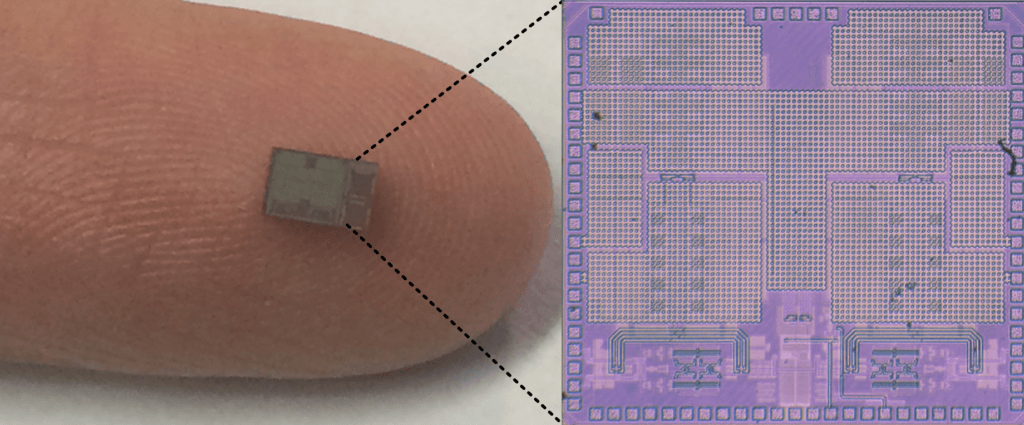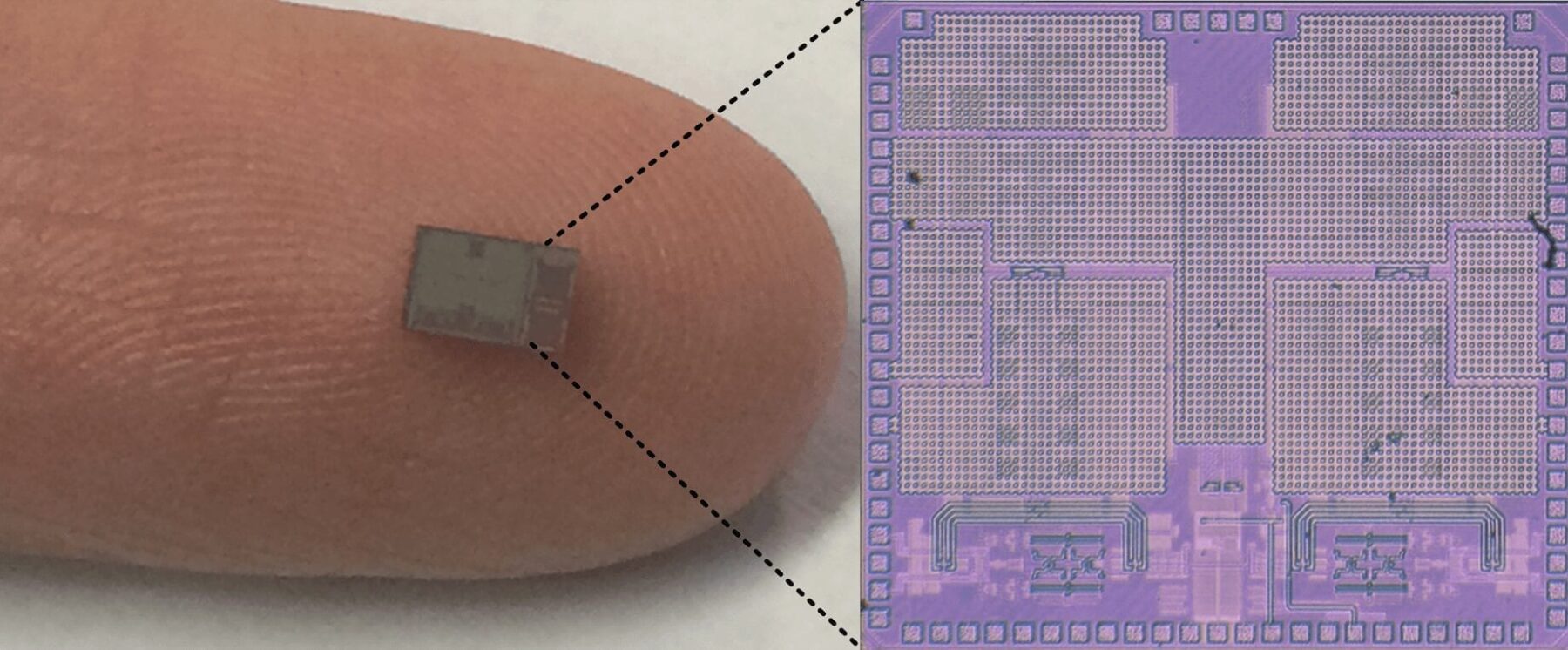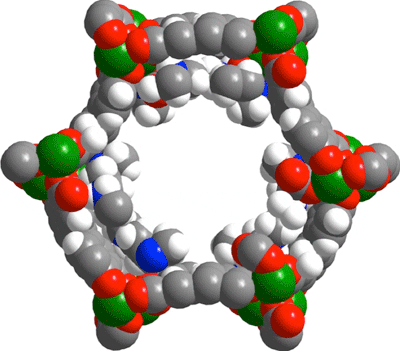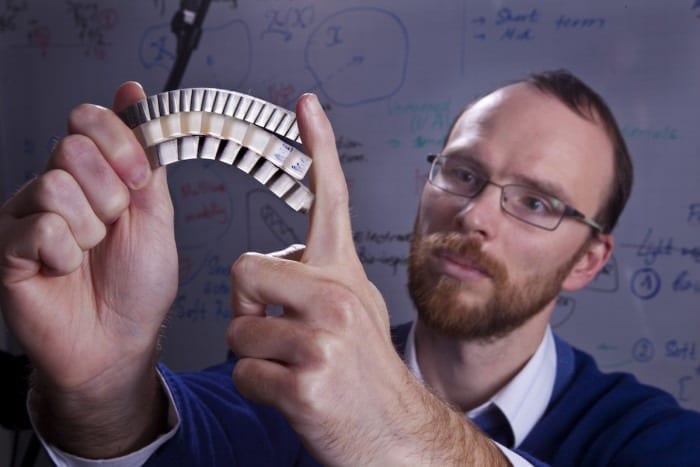
CoSMIC (Columbia high-Speed and Mm-wave IC) Lab full-duplex transceiver IC that can be implemented in nanoscale CMOS to enable simultaneous transmission and reception at the same frequency in a wireless radio.
Columbia Engineers Invent Nanoscale IC That Enables Simultaneous Transmission and Reception at the Same Frequency in a Wireless Radio
A team of Columbia Engineering researchers has invented a technology—full-duplex radio integrated circuits (ICs)—that can be implemented in nanoscale CMOS to enable simultaneous transmission and reception at the same frequency in a wireless radio. Up to now, this has been thought to be impossible: transmitters and receivers either work at different times or at the same time but at different frequencies. The Columbia team, led by Electrical Engineering Associate Professor Harish Krishnaswamy, is the first to demonstrate an IC that can accomplish this. The researchers presented their work at the International Solid-State Circuits Conference (ISSCC) in San Francisco on February 25.
“This is a game-changer,” says Krishnaswamy. “By leveraging our new technology, networks can effectively double the frequency spectrum resources available for devices like smartphones and tablets.”
In the era of Big Data, the current frequency spectrum crisis is one of the biggest challenges researchers are grappling with and it is clear that today’s wireless networks will not be able to support tomorrow’s data deluge. Today’s standards, such as 4G/LTE, already support 40 different frequency bands, and there is no space left at radio frequencies for future expansion. At the same time, the grand challenge of the next-generation 5G network is to increase the data capacity by 1,000 times.
So the ability to have a transmitter and receiver re-use the same frequency has the potential to immediately double the data capacity of today’s networks. Krishnaswamy notes that other research groups and startup companies have demonstrated the theoretical feasibility of simultaneous transmission and reception at the same frequency, but no one has yet been able to build tiny nanoscale ICs with this capability.
“Our work is the first to demonstrate an IC that can receive and transmit simultaneously,” he says. “Doing this in an IC is critical if we are to have widespread impact and bring this functionality to handheld devices such as cellular handsets, mobile devices such as tablets for WiFi, and in cellular and WiFi base stations to support full duplex communications.”
Read more: New Technology May Double Radio Frequency Data Capacity
The Latest on: Full-duplex radio integrated circuits
[google_news title=”” keyword=”Full-duplex radio integrated circuits” num_posts=”10″ blurb_length=”0″ show_thumb=”left”]
via Google News
The Latest on: Full-duplex radio integrated circuits
- Keysight Introduces Next-Generation Radio Frequency Circuit Simulator for RFIC Chip Designerson April 18, 2024 at 8:17 am
Keysight Technologies, Inc. (NYSE: KEYS) introduces RFPro Circuit, a next-generation radio frequency (RF) simulation tool targeting the complex, multi-physics requirements of today's RF integrated ...
- Astronomers detect radio halo in a massive galaxy clusteron April 15, 2024 at 6:30 am
An international team of astronomers has performed radio observations of a massive galaxy cluster known as ACT-CL J0329.2-2330, which resulted in the detection of a new radio halo in this cluster. The ...
via Bing News










